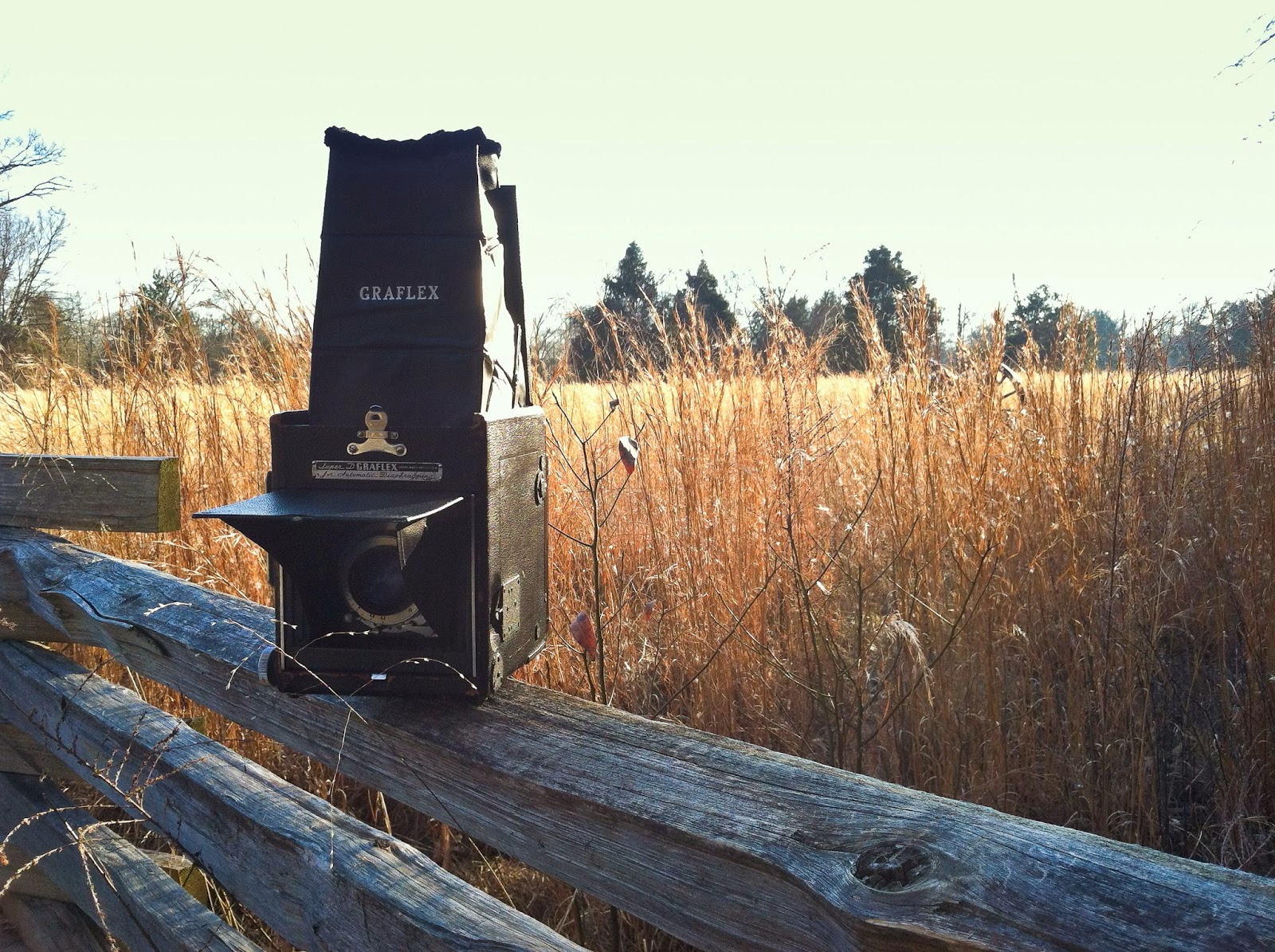My friend Eric over at www.easmithv.com, has been on me for a couple of years to get a Graflex SLR. Which is exactly as it sounds. It is a Single Lens Reflex camera, but it uses large format film, or medium format with the proper back.
Rather than do a full write up on it's history, the good people over at www.graflex.org (THE site for all things Graflex related) already have a great write-up on these cameras you can read here.
After searching for a decent example and scraping up the funds after a tough year, I finally found one. A nicely used 4x5 SLR, for a good price. But, unfortunately as is the case with many things on ebay, it wasn't described properly and turned out to be a 3x4 Graflex instead. It wasn't the seller's fault, unless you are familiar with these cameras, it is easy to make mistakes in identification. The two look almost identical save for size. This one happened to be the seller's grandfather's. It is in good condition and at first I thought of returning it, but the seller kindly offered me $100 in partial refund if I wanted to keep it, and I accepted. I had already kind of gotten attached to it anyway.
 |
| My Graflex RB Super D in 3.25 x 4.25. |
Now the problem with 3x4 is it's unusual size, 3.25 inch x 4.25 inch. Which isn't really made at all today. But with some careful cutting you can trim 4x5 film to fit and there are some medium format backs that are available, albeit somewhat uncommon and expensive. Mine is a 6x9 (6 cm x 9 cm) which is not much less than 3x4. So that was an easy option to fix. However, the camera came with a magazine for 12 sheets which is called a "bag mag." I had already figured how to cut the film, but the film was an unusual size for my processor to develop. So I found a solution by cannibalizing two old broken Patterson reels. By adjusting their size to open more than normal I was able to slip two sheets of 3x4 film in it. It isn't terribly efficient, but it does work.
 |
| Modified Patterson Reel to accept 3.25x4.25 film. |
Not long after, I did finally find a nice 4x5 Super D from Victory Camera. I'll talk more about that in the next post. In the meantime here are some pictures from the 3.25 x 4.25 RB Super D.
 |
| "Park Fountain" Green Sensitive X-Ray Film, Developed in Rodinal |
 | |||||||||
| "The Large Format Photographer's Friend" Ilford HP5+, 120 Film, Developed in D-76 |
 |
| "The Trail" Ilford HP5+, 120 Film, Developed in D-76 |
 | |
| "Old Man" My faithful dog getting along in years. Ilford HP5+, 120 Film, Developed in D-76. |
 |
| "Lone Tree" Ilford HP5+, 120 Film, Developed in D-76. |
 |
| "Sigma SA-9" Ilford HP5+, 120 Film, Developed in D-76. |
 |
| "Salt and Pepper" Ilford HP5+, 120 Film, Developed in D-76. |
 |
| "Stones River Cannons" My standard test shot. Ilford HP5+, 120 Film, Developed in D-76. |
Join us next time for: New Year and The Graflex RB Super D, part 2!
